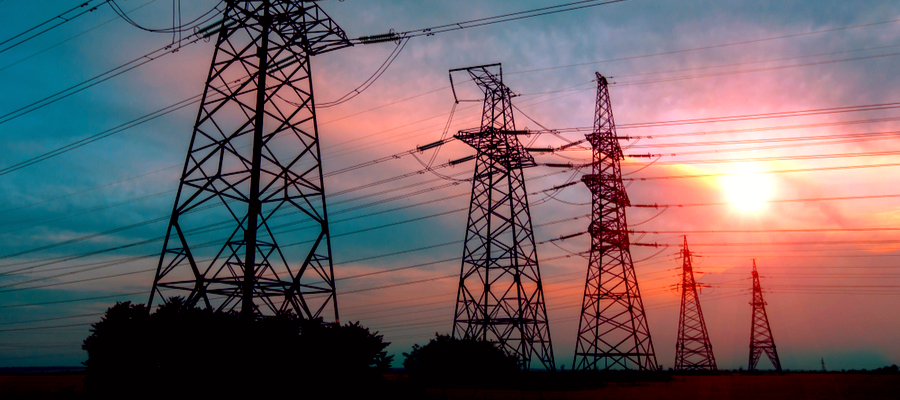An electrifying announcement leads to more questions than answers

In late August, Prime Minister Justin Trudeau traveled to Vancouver to announce that the federal government had agreed to financially support a new hydroelectric transmission line project in British Columbia’s remote northeast region.
In a memorandum of understanding signed with the provincial government, the federal government committed $83.6 million to the project, which will cover nearly 30 per cent of the project’s estimated $298 million in costs.
Other similar projects may also receive future federal government support.
The line, now under construction, is the second to be built in a row that is designed specifically to provide allegedly “clean” hydroelectric power to the province’s natural gas industry, which in recent years has significantly expanded operations in the region.
“Today’s agreement is not only crucial to B.C. meeting their climate commitments on time, it will also position Canada as a supplier of the world’s cleanest natural gas. This is important progress,” Trudeau said, in front of a backdrop featuring pickup trucks emblazoned with logos of British Columbia’s publicly owned hydro provider, BC Hydro.
“But there is reason to believe that such a conversion—a publicly-subsidized conversion—will not, in fact, reduce overall greenhouse gas emissions.”
Both the prime minister and British Columbia Premier, John Horgan, maintain that electrifying natural gas industry operations in the region and, perhaps one day, Liquefied Natural Gas plants on the province’s coastline, is crucial to provincial and federal climate change objectives.
They argue that the natural gas industry has long used a portion of the gas that flows to the surface following drilling and hydraulic fracturing (fracking) operations to power its various facilities. If that gas use is curtailed by switching the power source to hydroelectricity instead, then voila! greenhouse gas emissions are reduced accordingly.
But there is reason to believe that such a conversion—a publicly-subsidized conversion—will not, in fact, reduce overall greenhouse gas emissions, either in Canada or elsewhere.
The most significant reason why is that the gas “saved” through electrification still ends up getting combusted. How do we know this? Because there is nothing in the electrification plan that says that the gas saved through electrification will stay in the ground, never to be used.
Because that commitment isn’t there, gas saved through electrification simply enters the pipeline stream for subsequent processing, sale and use somewhere else. In the case of natural gas produced in British Columbia, the bulk of that subsequent use is in Canadian provinces from Alberta east and in the US. And should a Liquefied Natural Gas industry one day emerge on Canada’s west coast, it would almost certainly mean use in China and other Pacific Rim countries.
One notable fact not available when the memorandum of understanding was announced, was just how many greenhouse gas emissions will be avoided through electrification.
“There is nothing in the electrification plan that says that the gas saved through electrification will stay in the ground, never to be used.”
But if the answer eventually provided is based simply on a calculation of the “avoided” greenhouse gas emissions associated with the conversion from natural gas to electricity, it provides a wholly incomplete picture of what is unfolding in northeast B.C.
With both Canada and British Columbia committed to sharply reducing greenhouse gas emissions, a fullsome picture of the emissions associated with natural gas production in Canada’s westernmost province is crucial.
Without it, neither the federal nor the provincial governments can credibly claim that they are able to reach their goals. Here are just three accounting items that need to be in the mix when the electrification plan is placed in a crucial broader context:
- Emissions of methane, a potent greenhouse gas, occur regularly at gas wells and may be significantly higher at gas wells that have been fracked. What are the projected increases in fracked natural gas wells that will occur should a Liquefied Natural Gas industry emerge in B.C.?
- What are the total, lifecycle emissions associated with producing fracked natural gas in B.C. and how do such emissions compare with other fossil fuel sources, including coal?
- What are the projected methane emissions that will occur when a third hydroelectric reservoir is created in northeast B.C. at the Site C dam, now under construction? Hydro reservoirs the world over are known methane sources.
Short of addressing such questions, claims of a clean, green energy future based on an electrified natural gas industry must not go unchallenged.
This post is part of the Corporate Mapping Project, a research and public engagement project investigating the power of the fossil fuel industry in Western Canada, led by the University of Victoria, the Canadian Centre for Policy Alternatives (BC and Saskatchewan Offices) and Parkland Institute. This research is supported by the Social Science and Humanities Research Council of Canada (SSHRC) and the Minor Foundation for Major Challenges.
Topics: Climate change & energy policy, Environment, resources & sustainability, Fracking & LNG, Provincial budget & finance


